Thanksgiving History & Symbols
A nationally recognized and celebrated U.S. holiday, Thanksgiving is a time where families gather together and give thanks for all that the year has brought. Generally focusing around a tasty and bountiful meal, Thanksgiving is a wonderful way to give gratitude for all we have. Below is a brief history of the holiday along with symbols associated with Thanksgiving, as compiled from History.com and The Holiday Spot.
History of Thanksgiving
In 1620, religious separatists in search of being able to openly practice their faith left England on the ship the Mayflower, crossing the ocean to the New World, where they arrived near the tip of Cape Cod after a treacherous journey. The first winter in Massachusetts was incredibly brutal, and come spring only half of the 102 original passengers survived to see their first spring.
In March they were surprised with a visit from an English speaking Abenaki Indian who a few days later brought Squanto, a member of the Pawtuxet tribe, who taught the Pilgrims how to avoid poisonous plants, catch fish in the rivers, extract maple sap from trees, and cultivate corn. In addition, Squanto also helped the settlers form an alliance a local tribe named the Wampanoag, which would last for more than 50 years.
Following a successful first corn harvest in November of 1621, Governor William Bradford invited a group of the Pilgrims’ Native American allies for a celebratory feast. The feast lasted for three days, most likely included fowl and deer, and is now remembered as American’s first Thanksgiving.
The Pilgrims celebrated their second Thanksgiving in 1623 after a long and almost costly draught to the year’s harvest. Throughout the American Revolution (1765-1783), one or more days of thanksgiving were chosen by the Continental Congress, and in 1789, the first Thanksgiving proclamation by the U.S. government was issued by George Washington. Americans were asked to give thanks and gratitude for the ratification of the U.S. Constitution and the end of the war, and days were also designated during the presidencies of John Adams and James Madison.
New York was among the first of a few states to officially adopt an annual Thanksgiving in 1817, however, celebrations were held on different days, and the South was mostly unfamiliar with the tradition. In 1827, editor and writer Sarah Joseph Hale started a campaign to make Thanksgiving a national holiday, and finally in 1863 Abraham Lincoln proclaimed Thanksgiving a national annual holiday held on the last Thursday of November. In 1939, Franklin D. Roosevelt moved Thanksgiving up one week, however, after the change was met with much opposition, a bill was signed in 1941 bringing Thanksgiving back to its original fourth Thursday in November.
Today Thanksgiving is a U.S. celebrated holiday which centers on a plentiful meal of turkey and side dishes such as cranberry sauce and mashed potatoes. Parades around the country have also become an important part of the holiday, and the most famous one is New York City’s Thanksgiving Day parade, which has been presented Macy’s since 1924. Attracting some 2 million people watching in person, and tens of millions watching on TV, the parade really brings the spirit of the holiday together.
- Thanksgiving Symbols
Cornucopia Arrangements And Gifts
Pumpkins Arrangements And Gifts
Sources
http://www.history.com/topics/thanksgiving/history-of-thanksgiving
http://www.theholidayspot.com/thanksgiving/symbols.htm

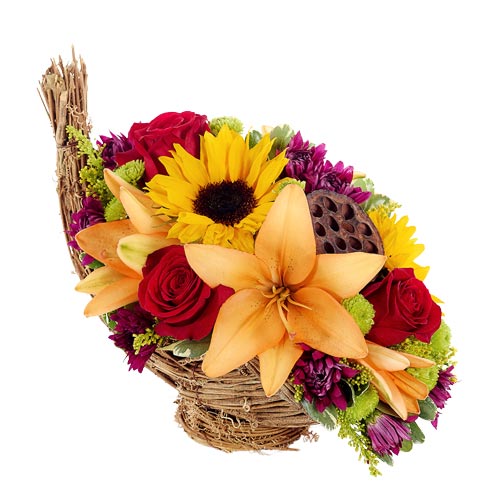
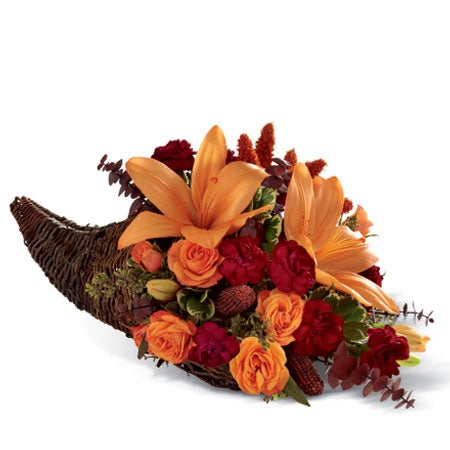
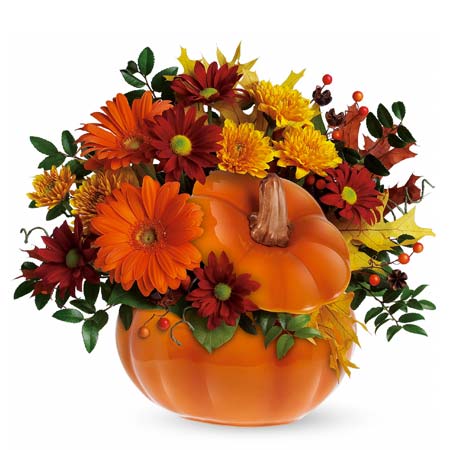
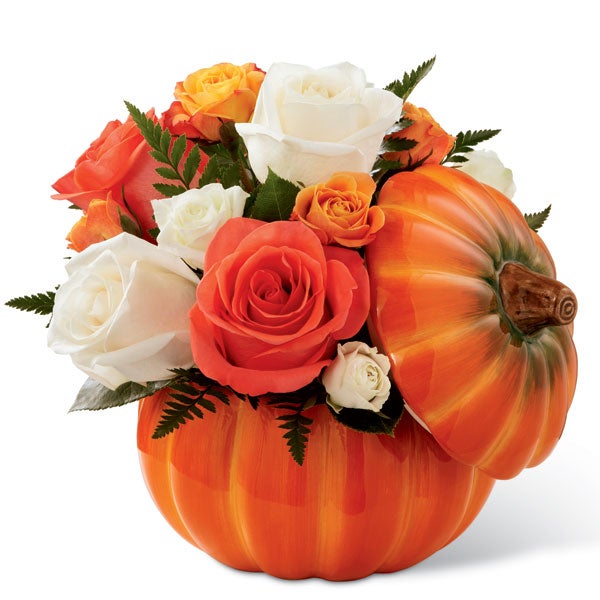
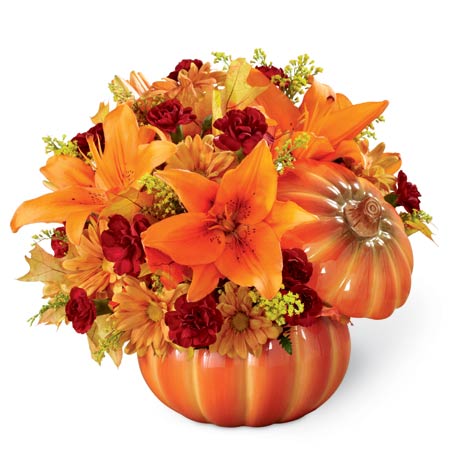
 Days of Autumn Pumpkin Bouquet
Days of Autumn Pumpkin Bouquet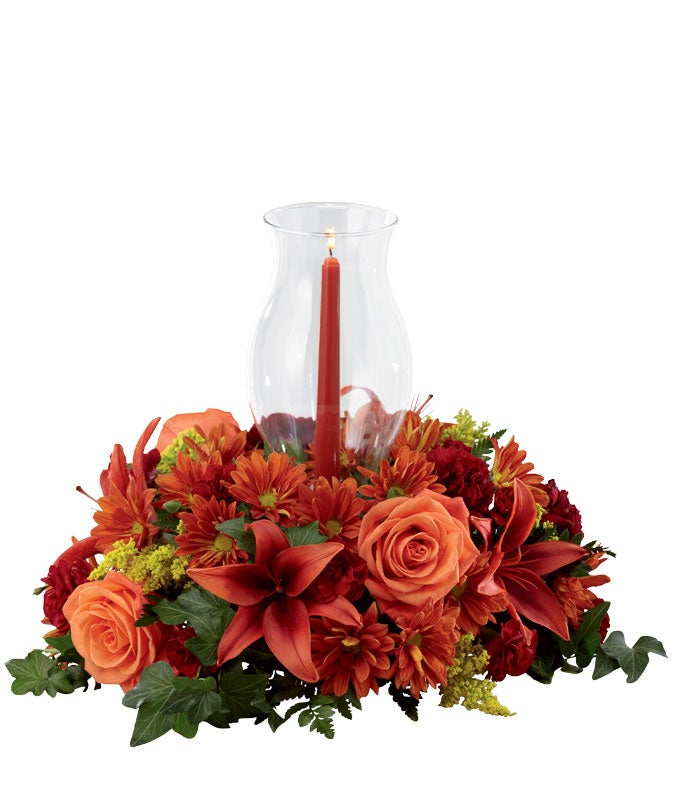 The Perfect Thanksgiving Centerpiece
The Perfect Thanksgiving Centerpiece
